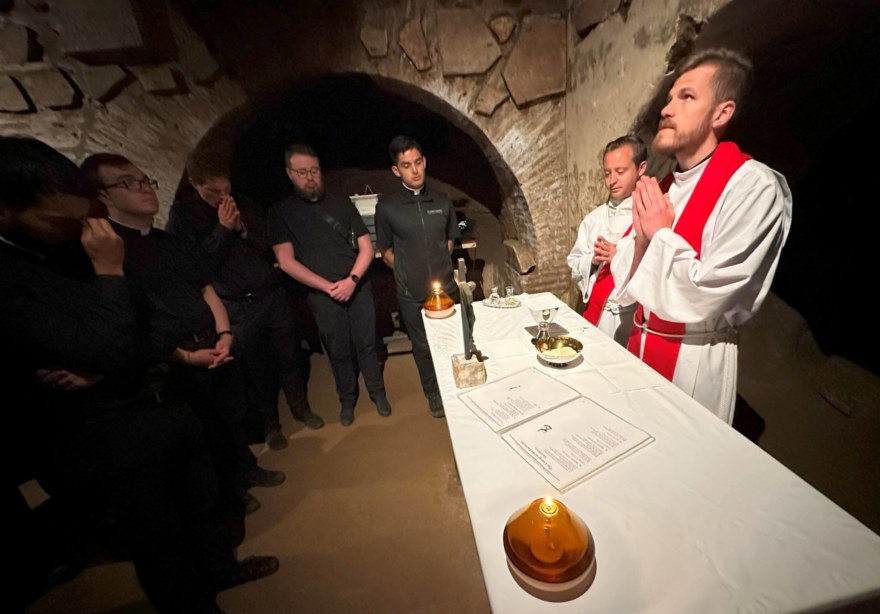Truth, Goodness, and Beauty | Postcards from Rome 2023
Enjoy Adam Boehlein’s Journal and Reflection on Week 2 of The Rome Experience:
5/29/23
We are now on our third day of spiritual retreat in Bracciano where we have been given the chance to grow closer to God as we celebrate mass, adore Christ, hear meditations by Fr. Eric, and just spend time in silent prayer. Surrounded as we are by the beauty of God’s creation in Bracciano, one can’t help but contemplate this beauty in prayerful silence. In contemplating the beauty of nature, one detects within creation an inner law, a reason by which it is ordered in the way in which it is. Applying this to ourselves as humans, the very pinnacle of creation where earth and heaven intersect, we know that we are not meaningless products of evolution destined only for conflict with other physical forces in the universe, a conflict which ends in our demise. We are meant for life and this life has a meaning, a reason which goes beyond that of death and conflict. By taking time to contemplate the beauty of creation in between Holy Mass in the morning and Eucharistic Adoration in the afternoon, we see that the meaning of the created cosmos, the meaning of human history, and the meaning of our own life is to be ultimately found in Jesus Christ the Incarnate Word who is meaning and life itself. It is not by chance then that the Second Vatican Council teaches that only in the mystery of Christ the Incarnate Word does the mystery of man take on light (GS 22). We each have a reason for which we exist, a particular vocation, which must be lived out with love in a beautiful way. As the recently departed Pope Benedict XVI stated himself: “We are not some casual and meaningless product of evolution. Each of us is the result of a thought of God. Each of us is willed. Each of us is loved”.
5/30/23
In our digitally and technologically advanced civilization where more and more people have more means of contacting others across wider ranges of distance, we are still asking ourselves the perennial question: how is it that we can achieve communion?
During the spiritual retreat at Bracciano, where we weren’t allowed to converse with others and strived to unite ourselves ever more closely with Christ in silence, I experienced a communion with my fellow seminarians, the Church, and others that is derived from a prior communion with Christ. Communion with Christ is communion with others because Christ lives completely for others as a result of his completely living for the Father. I believe that the spirituality of communion which I fostered during the spiritual retreat at Bracciano will help me to truly experience Rome as not just another travelers destination but a place where I get to experience communion with Christ and his universal Church, the Church I am being called to serve with Christ-like love as a potential priest.
5/31/23
Going to St. Peter’s, one can’t help but notice that it wasn’t built all at once. Rather, one sees here and there statues, tombs, and art pieces commemorating events as well as saints and popes, such as St. Pope Pius X and St. Pope John Paul the Great who have continued to build on the apostolic foundations of the Church whose cornerstone is Jesus Christ. These features of St. Peter’s Basilica aren’t additions that get rid of all that precedes them insignificant nor are they added in a way that makes them look out of place like a piece of modern art in a Renaissance art gallery. They are added in a way that corresponds to the inner identity of the Basilica. The beauty of St. Peter’s Basilica with all its various features is like the truth revealed in tradition. It has an inner identity which isn’t compromised by further legitimate developments. These legitimate developments only reveal truth to a greater extent just as a saint further reveals the greatness and glory of God to a greater extent. As potential priests who will lead the Church and pass on its Tradition, we can’t do what we like with Tradition according to our own whims and subjective desires. Rather, we must pass on the whole of the Tradition which we receive, including those which are uncomfortable to modern sensibilities. Just like the great and beautiful art which adorns St. Peter’s Basilica after it was built over the generations, the faith of the Church is too great of a treasure to be squandered or treated lightly. We can only build up the Church by being good and holy priests who work for the salvation and sanctification of souls.
6/1/23
One notices in Rome that there are not just statues of Jesus, Mary, and the saints, but also statues of pagan or secular figures such as the Emperors or Roman divinities. To the outside eye, the pagan and secular statues may appear to be just as beautiful and magnificent as the Christian ones. To those of the Christian faith, the statues and art representative of pagan and secular culture don’t match up to the beauty, truth, and goodness of Christian art because art of Jesus, Mary, and the saints points to the reality of the beautiful lives which these people lived. Whereas Greco-Roman gods are known for containing the sinful limitations of humanity, the lives of Mary and the saints are defined by the fact that they went out of their way in following the One true God, the God of Jesus Christ who is Truth, Goodness, and Beauty itself incarnate. The beauty of Christian statues reflects the beautiful lives of Jesus, Mary, and the saints. God is calling us all to live the beautiful life of holiness but living this life can only be done by living a life that is also true and good, a life that is conformed to the mystery of Christ crucified.
6/2/23
Being at the center of Christianity in Rome, I can’t help but feel that I am home, that the Catholic Church is where I need to be in order to attain that goal for which all humanity secretly strives: salvation, a salvation which comes only through Christ the Head and his Mystical Body the Church.
6/3/23
Celebrating Mass in the catacombs was a surreal experience. It gave us a greater sense of the fact that Christianity is not only grounded in history but opens up history to eternity because it is centered around salvation through Jesus Christ who is true God and true Man.
6/4/23
Being able to celebrate the sacrifice in different parts of Rome halfway across the globe away from home, one is able to see that the oneness which defines the presence of Christ in the Eucharist also defines the Church. Just as the same Christ is wholly present in all pieces of the consecrated host, so is the Church wholly present wherever Mass is celebrated.
Adam Boehnlein
Archdiocese of Cincinnati


